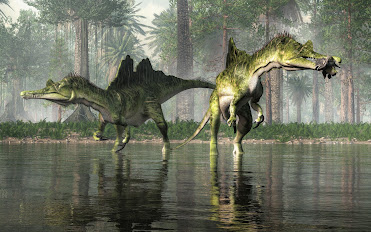It is one of the best local sites in the province to experience a fossil dig first-hand. It's an easy 4-hour drive from Vancouver and easily done as a rather longish day trip. I headed up this past summer with some wonderful enthusiastic crew to see how things were progressing with its development.
We were greeted on the day by two wonderful hosts from the Bonaparte Band, Gayle Pierro and Leroy Antoine. Both were very welcoming and informative, sharing the lay of the land, a bit of their history with the workings and offering us a guided tour.
As McAbee is a Heritage Site, their only request was that we stay within the marked area and trails and keep ourselves safe. Here safe means hydrated, shaded from the sun and avoiding both the resident rattlesnakes and cacti. McAbee offers an excellent opportunity for education and outreach both for locals and the larger community. It was very enjoyable to see the reactions of those visiting the site as they took in the wonderful diversity of fossil species and learning about the local history from our hosts.
The Province is committed to providing access to the site to scientists and the lay public. The direction on what happens next at McAbee is being driven by the Heritage Branch in consultation with members of the Shuswap Nation and Bonaparte Band. Bonaparte's traditional territory is located within the Shuswap Nation and includes the site where the McAbee Fossil Beds are situated.
It would be good to see McAbee take a page out of the Courtney and District Museum's playbook. You'll recall that it was the Puntledge Elasmosaur that sparked the expansion of that museum and inspired a whole host of outreach and educational programs. The Courtenay Museum has been offering paid guided tours to the elasmosaur heritage site for over a dozen years.
One of the sister sites to McAbee, the Driftwood Canyon Provincial Park Fossil Beds, offers an honours system for their site. Visitors may handle and view fossils but are asked to not take them home. Both Driftwood Canyon and McAbee are part of an arc of Eocene lakebed sites that extend from Smithers in the north, down to the fossil site of Republic Washington, in the south. The grouping includes the fossil sites of Driftwood Canyon, Quilchena, Allenby, Tranquille, McAbee, Princeton and Republic. Each of these localities provides important clues to our ancient climate.
The fossils range in age from Early to Middle Eocene. McAbee had a more temperate climate, slightly cooler and wetter than other Eocene sites to the south at Princeton, British Columbia, Republic in north-central Washington, in the Swauk Formation near Skykomish and the Chuckanut Formation of northern Washington state. The McAbee fossil beds consist of 30 metres of fossiliferous shale in the Eocene Kamloops Group.
The fossils are preserved here as impressions and carbonaceous films. We see gymnosperm (16 species); a variety of conifers (14 species to my knowledge); two species of ginkgo, a large variety of angiosperm (67 species); a variety of insects and fish remains, the rare feather and a boatload of mashed deciduous material. Nuts and cupules are also found from the dicotyledonous Fagus and Ulmus and members of the Betulaceae, including Betula and Alnus.
We see many species that look very similar to those growing in the Pacific Northwest today. Specifically, cypress, dawn redwood, fir, spruce, pine, larch, hemlock, alder, birch, dogwood, beech, sassafras, cottonwood, maple, elm and grape. If we look at the pollen data, we see over a hundred highly probable species from the site. Though rare, McAbee has also produced spiders, birds (and lovely individual feathers) along with multiple specimens of the freshwater crayfish, Aenigmastacus crandalli.
For insects, we see dragonflies, damselflies, cockroaches, termites, earwigs, aphids, leafhoppers, spittlebugs, lacewings, a variety of beetles, gnats, ants, hornets, stick insects, water striders, weevils, wasps and March flies. The insects are particularly well-preserved. Missing are the tropical Sabal (palm), seen at Princeton and the impressive Ensete (banana) and Zamiaceae (cycad) found at Eocene sites in Republic and Chuckanut, Washington.
McAbee is located just east of Cache Creek, just north of and visible from Highway 1/97. 14.5 km to be exact and exactly the distance you need to drink one large coffee and then need a washroom. You'll be pleased to know they have installed one at the site. McAbee is a site for hiking boots, hand, head and eye protection. They have a few resident rattlesnakes and prickly cacti to keep you on your toes. Keep yourself safe and well-hydrated. There will be someone to greet you and let you know if it is open to collecting or if you'll have to satisfy yourself by enjoying their interpretive offerings.
As you drive up, you'll see telltale hoodoos on the ridge to let you know you've reached the right spot. If you have a GPS, pop in these coordinates and you're on your way. 50°47.831′N 121°8.469′W.


,%20University%20of%20Victoria%20(UVic);%20Royal%20British%20Colu%20(2).png)

.jpg)











.png)
















